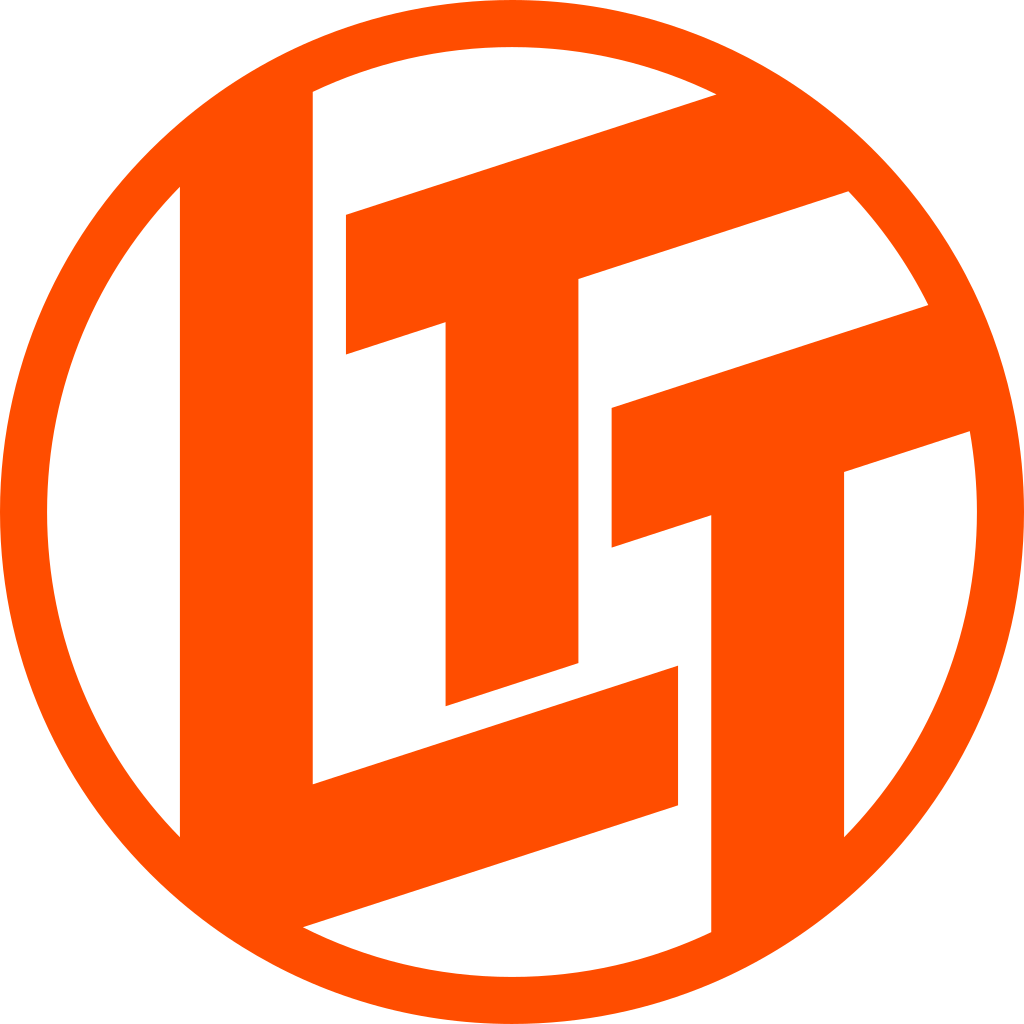A comparison of specs, key information, reviews, and best pricing from top retailers
Last updated -- hours ago | Report incorrect information
What we think

The PerfectRec laptop team Learn more
Updated January 10, 2024·
If you prioritize high-end performance for tasks like engineering and require sharper screen resolution, the Dell XPS 13 Plus is a better option albeit more expensive. On the other hand, if you're looking for a more affordable laptop that also offers flexibility and a larger screen, the Lenovo Flex 5 16 might suit you, but it comes with less powerful specifications and a lower resolution display. The Dell also boasts a better build quality and portability due to its lighter weight compared to the Lenovo. Both have touchscreens and similar battery life, with the Lenovo having a slight edge in that department. Give Feedback
this description is based on the product variant with some specs and product variant with some specs. At the time of writing, the variant with some specs cost some dollars and the variant with some specs cost some dollars.
Advantages of the Dell XPS 13 Plus
- Very good for general use
- Very good for engineering and design
- Very good for software development
- Very good for content creation
- Very good overall display quality
- Very good overall build quality
- Excellent portability
- Best in class speakers
- Excellent keyboard
Advantages of the Lenovo Flex 5 16
- The Lenovo Flex 5 16 has no clear advantages over the Dell XPS 13 Plus.
Key differences
General Use
8.4


7.6
3840 x 2400
RESOLUTION
2560 x 1600
OLED
DISPLAY TECHNOLOGY
IPS
374.0 nits
DISPLAY BRIGHTNESS
400.0 nits
10.0 Hours
BATTERY LIFE
11.5 Hours
9.0/10
KEYBOARD QUALITY SCORE
7.0/10
9.1/10
PORTABILITY SCORE
7.4/10
The Dell XPS 13 Plus is very good for general use, while the Lenovo Flex 5 16 is good.
The Dell XPS 13 Plus excels in general use due to its high-resolution OLED screen, robust processing power with an Intel i7 CPU, and significant RAM, making it snappy and visually impressive, albeit at a premium cost and with standard portability and battery life. In contrast, the Lenovo Flex 5 16, while still performing well for everyday tasks, offers a different balance with more modest specifications, possibly lower cost, but a design that is bulkier, potentially trading off some portability and display quality.
Engineering and Design
8.2


7.2
7.9/10
OVERALL CPU SCORE
6.9/10
3.8/10
OVERALL GPU SCORE
3.7/10
32.0 GB
RAM
16.0 GB
The Dell XPS 13 Plus is very good for engineering and design, while the Lenovo Flex 5 16 is good.
The Dell XPS 13 Plus is highly suitable for engineering and design due to its powerful CPU, double the RAM, and superior OLED screen with higher resolution and color accuracy compared to the Lenovo Flex 5 16, which although sufficient for engineering tasks, has half the RAM and an IPS display with lower resolution and color performance. The Flex 5 16, however, offers a larger screen and may provide better versatility as a 2-in-1 convertible at the expense of some of the XPS’s higher-end specifications and screen quality.
Content Creation
8.3


7.6
7.9/10
OVERALL CPU SCORE
6.9/10
3840 x 2400
RESOLUTION
2560 x 1600
32.0 GB
RAM
16.0 GB
OLED
DISPLAY TECHNOLOGY
IPS
The Dell XPS 13 Plus is very good for content creation, while the Lenovo Flex 5 16 is good.
PerfectRec’s Content Creation Score takes into account the many different features of the laptop that make it more or less suitable for photo editing, video editing and other content creation tasks.
Software Development
8.3


7.5
7.9/10
OVERALL CPU SCORE
6.9/10
32.0 GB
RAM
16.0 GB
3840 x 2400
RESOLUTION
2560 x 1600
9.0/10
KEYBOARD QUALITY SCORE
7.0/10
The Dell XPS 13 Plus is very good for software development, while the Lenovo Flex 5 16 is good.
PerfectRec’s Software Development Score takes into account the many different features of the laptop that make it more or less suitable for software developers.
Screen Quality
8.4


7.3
13.4in
SIZE
16.0in
3840 x 2400
RESOLUTION
2560 x 1600
OLED
DISPLAY TECHNOLOGY
IPS
60Hz
REFRESH RATE
60Hz
374.0 nits
BRIGHTNESS
400.0 nits
The Dell XPS 13 Plus has a better screen than the Lenovo Flex 5 16 for general use, gaming and AI, engineering and design, software development, and content creation.
The Dell XPS 13 Plus offers a high-resolution display with bright and vibrant colors which is excellent for engineering and design work that requires accurate color reproduction, but its standard refresh rate is not ideal for the fast-paced visuals needed in gaming and 3D applications. The Lenovo Flex 5 16 provides a solid all-around screen for general tasks and is also suitable for engineering and design due to its color presentation, but similarly falls short for gaming and 3D because of its average refresh rate. For regular users, both laptops deliver clear and sharp images, but professionals in gaming or 3D fields should consider models with higher refresh rates to ensure smoother motion and gameplay.
Battery
10.0 Hours


11.5 Hours
The Dell XPS 13 Plus has 10 hours of battery life. The Lenovo Flex 5 16 has 11.5 hours of battery life.
Battery life estimate is based on a mix of common use patterns. More portable and higher performing laptops tend to have less battery life.
Portability
Excellent


Good
13.4in
SIZE
16.0in
2.7 lbs
WEIGHT
4.6 lbs
0.6in
THICKNESS
0.7in
The Dell XPS 13 Plus has excellent portability, while the Lenovo Flex 5 16 has good portability.
The most portable laptops are small, thin, and light.
Build Quality
8.5


7.0
The Dell XPS 13 Plus has very good build quality, while the Lenovo Flex 5 16 has good build quality.
PerfectRec’s Build Quality Score incorporates case materials, display and keyboard flex, hinge quality, and overall reliability.
Cost
$1,849


$779
$0
$500
$1,000
$1,500
$2,000
$2,500
$3,000
The Dell XPS 13 Plus has a price of $1,849 and the Lenovo Flex 5 16 costs $779.

Let Us Help Find Your Perfect Laptop
Find your new laptop
Key similarities
Gaming and AI
6.4


6.2
3.8/10
OVERALL GPU SCORE
3.7/10
3840 x 2400
RESOLUTION
2560 x 1600
60Hz
REFRESH RATE
60Hz
No
SUPPORTS DLSS
No
No
MUX SWITCH / ADVANCED OPTIMUS
No
8.7/10
FAN NOISE SCORE
7.5/10
The Dell XPS 13 Plus and Lenovo Flex 5 16 are both only fair for gaming and AI.
The Dell XPS 13 Plus offers better gaming and 3D performance than the Lenovo Flex 5 16 primarily because it has a more powerful GPU and higher-quality OLED screen, despite the same screen refresh rate on both models. While both laptops share the same integrated graphics model, the difference in processing power, as well as the superior screen quality of the Dell, including better pixel density and contrast ratio, contribute to a more immersive gaming and 3D experience.
Give feedback
We’re constantly working to improve.
How the Dell XPS 13 Plus and the Lenovo Flex 5 16 compare to other laptops
Spec Comparison
| Dell XPS 13 Plus | Lenovo Flex 5 16 |
GENERAL | |||
|---|---|---|---|
| Price | |||
$1,849 | $779 | ||
Release Date | |||
Release Date | May 1, 2022 | April 1, 2022 | |
Overall Dimensions | |||
Overall Dimensions | 11.6'' x 7.8'' x 0.6'' | 14.1'' x 10'' x 0.74'' | |
Weight | |||
Weight | 2.71 lbs | 4.63 lbs | |
Width | |||
Width | 11.63" | 14.09" | |
Depth | |||
Depth | 7.84" | 9.99" | |
INTERNAL | |||
|---|---|---|---|
Processor | |||
Processor | Intel i7-1280P | Intel i7-1255U | |
RAM | |||
RAM | 32 GB | 16 GB | |
DDR Memory Version | |||
DDR Memory Version | 5 | 4 | |
RAM Slots | |||
RAM Slots | 0 | 0 | |
Storage | |||
Storage | 512 GB | 512 GB | |
BATTERY | |||
|---|---|---|---|
Battery Life | |||
Battery Life | 10 Hours | 11.5 Hours | |
Battery Capacity | |||
Battery Capacity | 55 Wh | 52.5 Wh | |
SCREEN | |||
|---|---|---|---|
Diagonal Size | |||
Diagonal Size | 13.4" | 16" | |
Display Technology | |||
Display Technology | OLED | IPS | |
Resolution | |||
Resolution | 3840 x 2400 | 2560 x 1600 | |
Refresh Rate | |||
Refresh Rate | 60Hz | 60Hz | |
Display Brightness | |||
Display Brightness | 374 nits | 400 nits | |
RELIABILITY, APPEARANCE & ACOUSTICS | |||
|---|---|---|---|
Build Quality Score | |||
Build Quality Score | 8.5/10 | 7/10 | |
Portability Score | |||
Portability Score | 9.2/10 | 7.4/10 | |
Gaming Laptop Appearance | |||
Gaming Laptop Appearance | No | No | |
Premium Business Laptop | |||
Premium Business Laptop | No | No | |
Fan Noise Score | |||
Fan Noise Score | 8.8/10 | 7.5/10 | |
HARDWARE FEATURES | |||
|---|---|---|---|
Keyboard Quality Score | |||
Keyboard Quality Score | 9/10 | 7/10 | |
Speaker Quality Score | |||
Speaker Quality Score | 9.5/10 | 6.8/10 | |
Webcam | |||
Webcam | 720p | 1080p | |
Fingerprint Reader | |||
Fingerprint Reader | Yes | Yes | |
Backlit Keyboard | |||
Backlit Keyboard | Yes | Yes | |
Number Pad | |||
Number Pad | No | Yes | |
CONNECTIVITY | |||
|---|---|---|---|
USB Type-A | |||
USB Type-A | 0 | 2 | |
USB-C ports | |||
USB-C ports | 2 | 1 | |
USB-C Charging | |||
USB-C Charging | Yes | Yes | |
Display Outputs | |||
Display Outputs | 2 | 2 | |
Thunderbolt Version | |||
Thunderbolt Version | 4 | 4 | |
Shopping
Dell XPS 13 Plus
See more
Dig into reviews and images
NotebookCheck
Andreas Osthoff | July 2022
"The XPS 13 Plus is powerful, but has its drawbacks. Dell did not only update the processor generation, but also decided to offer two completely different models from now on. The XPS 13 Plus gets the faster Intel Alder Lake-P chips, and the Core i7-1260P in our review unit offers good performance figures. However, the device once again shows the problems of the current Intel CPUs, because the high performance requires a lot of power. This affects the battery runtime as well as temperatures, so the new model (even with the Optimized power profile) is louder than the older model."
Lenovo Flex 5 16
See more
Dig into reviews and images
NotebookCheck
Andreas Osthoff | April 2023
"The Lenovo IdeaPad Flex 5 is a solidly equipped, 2-in-1 in the lower price segment. Performance is definitely sufficient for everyday tasks and in tests the battery proved itself to be very economical. That aside, there is a lot of standard fare on show and a search for real highlights ends in vain. The low color coverage and reflective display can be avoided by going for an optional 2.5K display but this also presumably results in poorer battery life. The cooling uses only one fan and leads to a raised temperature on one side of the device under load. Additionally, there is very loud fan noise, also under load or when gaming. On top of that, we also occasionally noticed electronic noises."
Get a great deal on the Dell XPS 13 Plus or the Lenovo Flex 5 16
About Dell
Dell is a highly recognizable American technology company, and is one of the largest personal computer vendor by market share. Their laptops are very popular for both personal and professional use, and they also own the Alienware brand which makes mid to high end gaming laptops. Their premium XPS range of laptops offer great build quality and portability, while Latitude and Precision laptops are known for reliability, repairability and performance for business users.
About Lenovo
Lenovo is a Chinese technology company, and one of the largest personal computer vendor. They are well known for a variety of technology products, including laptops. Their consumer series include their entry level IdeaPad and LOQ series and mid-to-high-end Yoga and Legion series. On the business-oriented side, their series include their entry-level ThinkBook series and mid-to-high-end ThinkPad series. Lenovo laptops offer strong performance for reasonable prices, and are often on sale.
Give feedback
We're constantly perfecting our model
Laptop guides you might be interested in
More comparisons for you
Compare Dell XPS 13 Plus vs. ASUS ROG Zephyrus G14
VS
Compare Dell XPS 13 Plus vs. ASUS ROG Zephyrus G15
VS
Compare Dell XPS 13 Plus vs. Acer Predator Helios 16
VS
Compare Lenovo Flex 5 16 vs. Dell Inpsiron 14 7435
VS
Compare Lenovo Flex 5 16 vs. Acer Nitro 5 15
VS
Compare Lenovo Flex 5 16 vs. ASUS Zenbook 14X
VS
FAQs
FAQs about laptops
Why trust us
This information was produced and vetted by the PerfectRec laptops team. We are a product research and recommendation organization that meticulously reviews and evaluates the latest laptop information and makes it digestible for you.
By the numbers
380
Laptops evaluated
48,640
Laptops stats compiled
13
Proprietary Laptops ratings developed
132,195
Recommendations made
28,643
Consumer hours saved
About the laptop team
Joe Golden, Ph.D
CEO and Laptops Editor
Joe is an entrepreneur and lifelong electronics enthusiast with a Ph.D in Economics from the University of Michigan.
Jason Lew
Staff Expert & Software Engineer
Jason is a staff expert and software engineer that has been making laptop recommendations for 7 years and moderates one of the largest laptop subreddits.
Chandradeep Chowdhury
Staff Expert & Software Engineer
Chandradeep is a staff expert and software engineer and expert in televisions and monitors. He’s been making monitor recommendations for ten years.
Craig Russell
Laptops Expert
Craig is a UK-based laptops expert. Craig works in IT, where he recommends and supports laptops and PCs for clients and has been recommending laptops on Reddit for five years.







